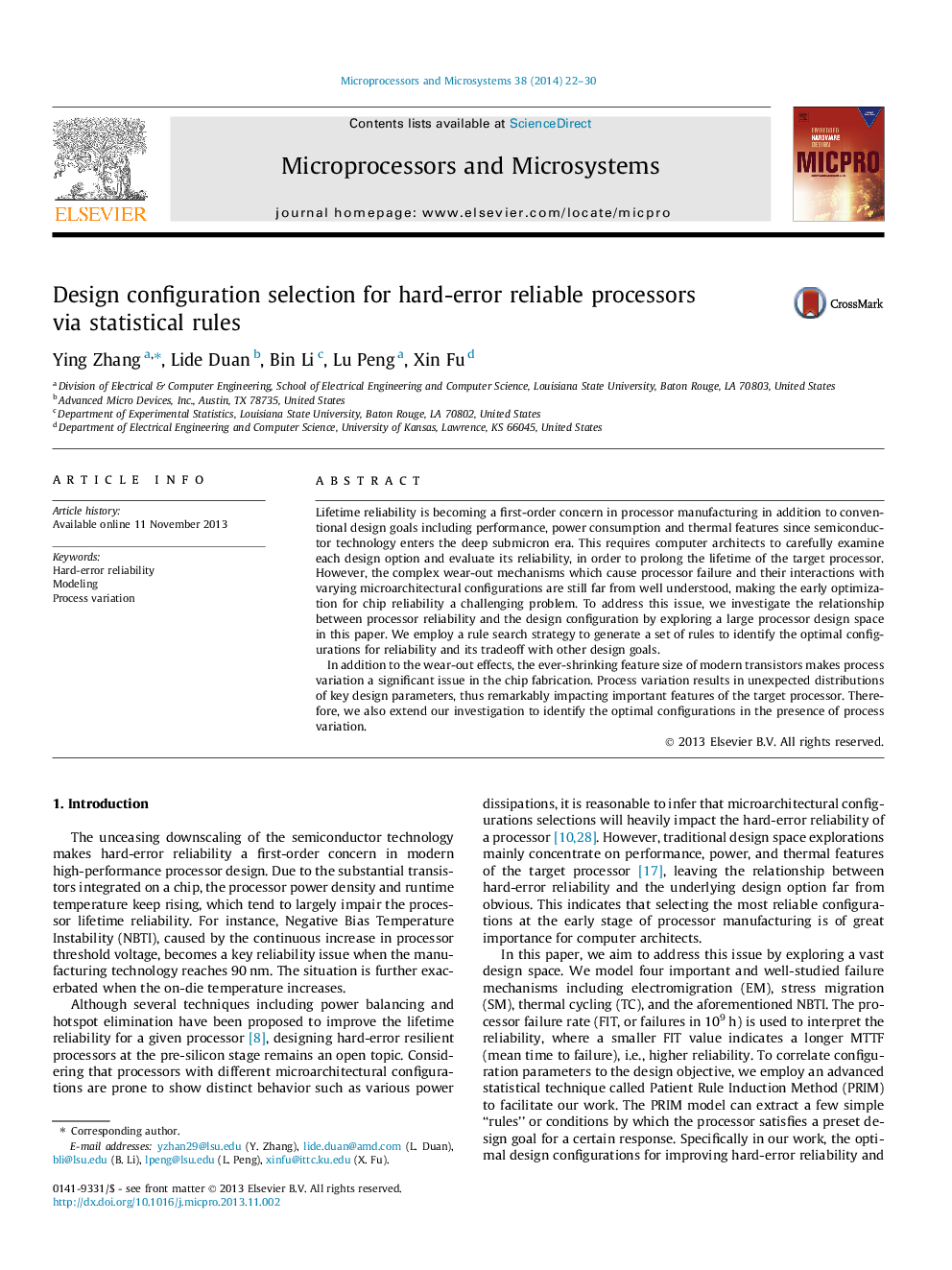| Article ID | Journal | Published Year | Pages | File Type |
|---|---|---|---|---|
| 462773 | Microprocessors and Microsystems | 2014 | 9 Pages |
Lifetime reliability is becoming a first-order concern in processor manufacturing in addition to conventional design goals including performance, power consumption and thermal features since semiconductor technology enters the deep submicron era. This requires computer architects to carefully examine each design option and evaluate its reliability, in order to prolong the lifetime of the target processor. However, the complex wear-out mechanisms which cause processor failure and their interactions with varying microarchitectural configurations are still far from well understood, making the early optimization for chip reliability a challenging problem. To address this issue, we investigate the relationship between processor reliability and the design configuration by exploring a large processor design space in this paper. We employ a rule search strategy to generate a set of rules to identify the optimal configurations for reliability and its tradeoff with other design goals.In addition to the wear-out effects, the ever-shrinking feature size of modern transistors makes process variation a significant issue in the chip fabrication. Process variation results in unexpected distributions of key design parameters, thus remarkably impacting important features of the target processor. Therefore, we also extend our investigation to identify the optimal configurations in the presence of process variation.
